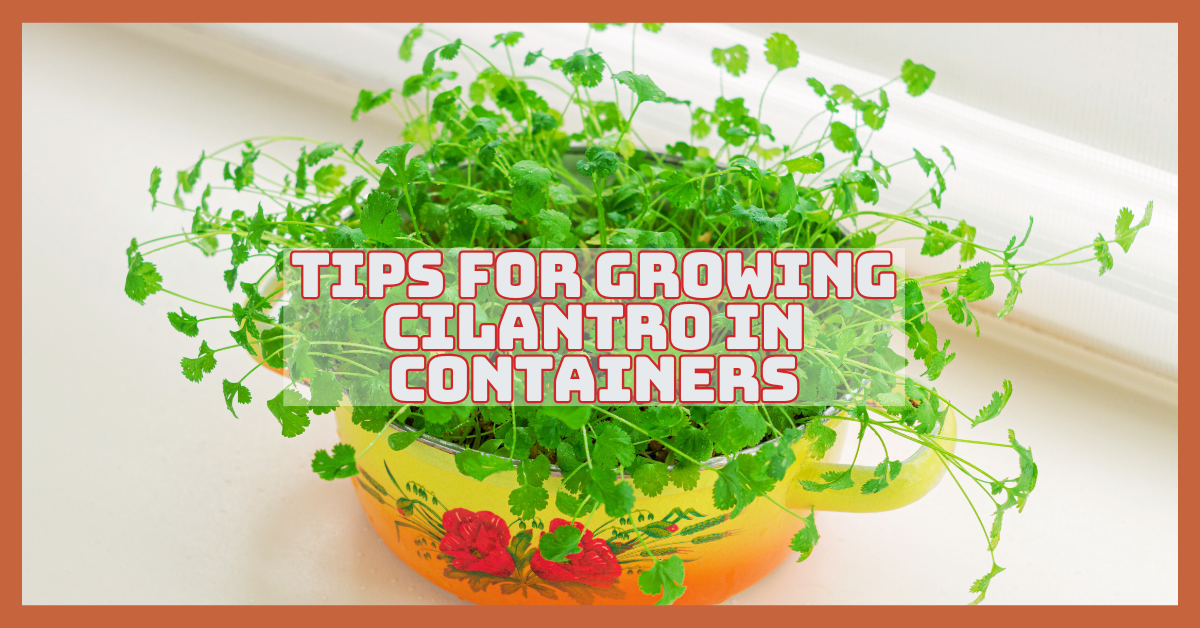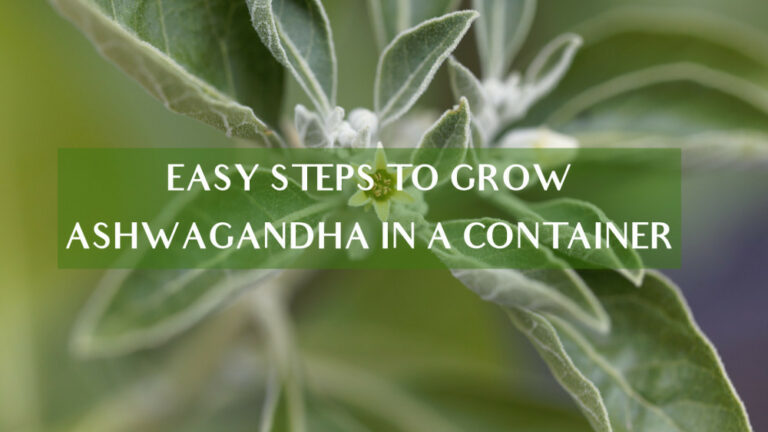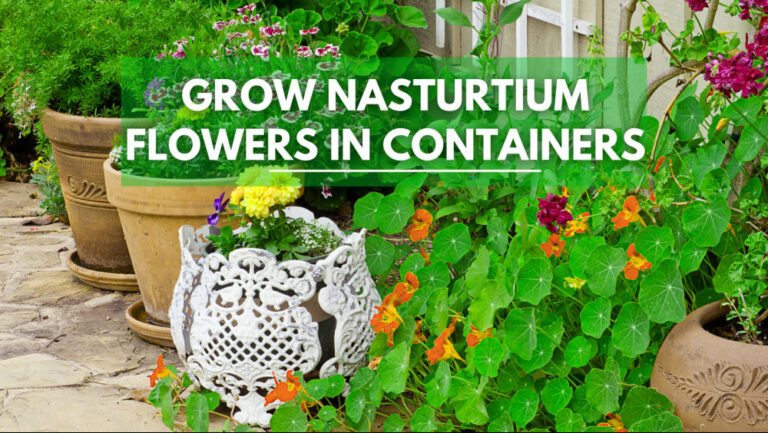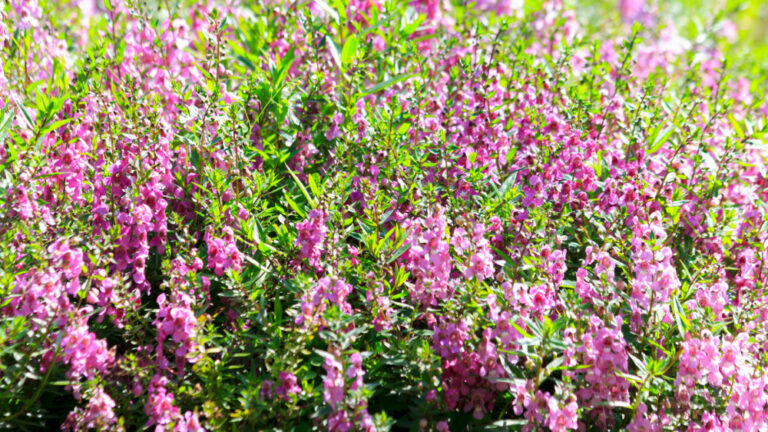Easy Tips For Growing Cilantro In Containers
Easy Tips For Growing Cilantro In Containers
Wouldn't it be great to grow fresh cilantro outside your kitchen door? The lacy, sweetly pungent leaves would be ready to harvest whenever you felt like making Mexican salsa, guacamole or a Middle Eastern yogurt sauce for your lamb kabobs.
However, if you've ever grown cilantro, you've probably noticed that it quickly produces a large crop. Plants are barely up before they flower and set seeds.
So those delectable leaves don't last long, especially in hot weather. I hope the blog on growing cilantro in containers will benefit you.

Origin Of Cilantro
Cilantro (Coriandrum sativum) is an annual herb that resembles parsley and belongs to the same family (Apiaceae).
This aromatic plant is native to southern Europe and is known by several names, including coriander, cilantro, and Chinese parsley.
Its name comes from the Greek word koris, which means “bedbug,” because the plant reeked like one.
Caraway leaves are light green, fluffy, and flat. The flavour of cilantro leaves differs significantly from that of parsley. Cilantro grows similarly to parsley.
However, unlike parsley, it does not respond well to multiple harvests. Some markets use cilantro roots, which require only a single crop (Figure 5 below).
Cilantro, like celery, cumin, carrots, and parsley, belongs to the Apiaceae family. The herb cilantro is an annual with a robust and lemony flavour. Coriander is a spice made from the dried seeds of the same plant, and it has a distinct flavour.
The dried seeds, known as coriander seeds, are used as a spice and have a significantly different taste from the leaves.
In Latin America, cilantro has several other names. In certain countries, the word “cilantro” (Coriandrum sativum) is used for culantro, while in others, the word “cilantro” (Coriandrum sativum) is used for Eryngium foetidum.
Cilantro de hoja Pequea (cilantro with little leaves) and cilantro are two Latin American words for cilantro (little cilantro).
Culantro (Eryngium foetidum) and cilantro (Coriandrum sativum) can be challenging to differentiate in Spanish.
Many people confuse the terms “cilantro,” “culantro,” and “recao,” which is another name for Eryngium foetidum.
Cilantro, also known as coentro in Portuguese, is used as a mirepoix in northern Brazil, along with culantro.
Cilantro and culantro are frequently combined in this region as cheiro-verde (green aroma), referring to the colour (green) and aroma (culantro).
Types Of Cilantro
The fresh leaves of coriander, cilantro (Coriandrum sativum), are native to southern Europe and Asia. In the 1500s, Spanish conquistadors transported the leafy herb to Mexico and, soon after, to the United States.
Cilantro, often known as Chinese or Mexican parsley, is popular in Mexican and Tex-Mex cooking and Asian cuisine.
Leisure, Slo Bolt, Caribe, California Long-Standing, Jantar, Santos, Terra, Costa Rica, Lemon, Delfino, and Moroccan are just a few cilantro varieties available.
Jantar and Santos are “bolt-resistant” cultivars, meaning they won't flower if the weather gets too hot.
1. Culantro
Culantro, known as spiny coriander, is used in various Caribbean and Asian recipes. Culantro can be substituted for leaf cilantro, and if you cultivate it yourself, remember that it prefers moist soil and enough shade.
Look for this cilantro variety in the “ethnic” or “global” sections of the shop if you can find it. The plant features long-leafed lettuce-like leaves and blue flowers at one point.
Culantro can reach a height of one foot and has leaves two inches wide when completely mature. One of the fascinating aspects of this plant is that it may be used to flavour food and for medical purposes.
When used in cooking, it has a powerful aroma and flavour, and when used medicinally, it has good analgesic and anti-inflammatory qualities.
Culantro is not the same as cilantro, despite being botanical cousins. It belongs to the same family as parsley, carrots, and parsnip.
2. Indian Summer Cilantro
Indian Summer Cilantro is a biennial herb that grows best over two years and requires minimal upkeep. If you want to plant this herb, you'll need to know a little about cultivating cilantro.
It reaches a height of approximately two and a half feet and is susceptible to pests, so if you plant it, watch out for them.
3. Leaf Cilantro
Cilantro has flat, serrated leaves that resemble parsley. But that's where the parallels end. While parsley has a mild flavour, cilantro has a strong flavour.
Some even characterize the flavour as “soapy,” but that is a personal preference. For the finest flavour, harvest cilantro leaves before they bolt or go to seed, and they're excellent for those in zones eight and over.
Leaf cilantro comes in a variety of flavours, including “Long-Standing,” “Leisure,” and “Jantar.” Cilantro thrives in the shade during the hot summer months.
Cilantro has flat, serrated leaves that resemble parsley. But that's where the parallels end. While parsley has a mild flavour, cilantro has a strong flavour. Some even characterize the flavour as “soapy,” but that is a personal preference.
4. Mexican Coriander
Mexican coriander blooms in mid-summer and is usually considered a biennial plant. It is a low-maintenance plant that attracts butterflies to your garden and is easy to maintain.
It has long been used to treat snake bites, infertility, hypertension, earaches, fever, burns, and malaria.
5. Potluck Coriander
Potluck coriander blooms in mid-summer and is usually considered a biennial plant. It is a low-maintenance plant that attracts butterflies to your garden and is easy to maintain.
It has long been used for medicinal purposes and is known to help with snake bites, infertility, hypertension, earaches, fever, burns, and even malaria.
6. Seed Coriander
You must grow coriander differently depending on whether you want to harvest the leaves or the seeds. If you want coriander seeds, go for a non-bolting type.
For example, the “Santo” and the “Jantar” produce seeds 10 days earlier than the leaves, but both are produced similarly.
Hang the plant upside down with a paper bag tied to the stem to capture the seeds once the plant has turned brown.
You may harvest all the seeds after only a few days since they will have all settled to the bottom of the bag.
7. Vietnamese Cilantro
Vietnamese cilantro is best grown in zones 10 and up, and it's typically said to be more flavorful than conventional cilantro.
Vietnamese cilantro, also known as Rau Ram, does not bolt as quickly as conventional cilantro, which is one reason for its flavour.
The plant produces slender, black leaves with smooth edges and vein patterns on both sides. You can use an entire sprig, including the stem, in your salads.
Using this cilantro variety. You may chop it up and add it to noodles, soups, and stews if you cook with it. If you decide to cultivate it, remember it prefers a lot of moisture and afternoon sun.
How To Grow Cilantro In Containers
Coriandrum sativum, or cilantro, is a popular herb for flavouring various meals.
Cilantro is a fragrant herb that enhances the flavour of many foods and is also simple to cultivate in containers. This article will show you how to grow cilantro in a pot.
But first, let us explain why you should cultivate cilantro in pots. You may already know that cilantro adds flavour to your kitchen, but you may be unaware that it is also a very nutritious herb.
Cilantro is high in potassium and low in calories, making it an ideal plant for your digestive system.
1. Choose A Container To Grow Cilantro
Growing cilantro in small containers is a common mistake. Despite its diminutive stature, cilantro grows best in a large, deep container.
Select a container with a minimum width of 18 inches and a depth of 12 inches. Before filling your container with soil, ensure it has some drainage holes.
Your cilantro garden will need a container. Cilantro requires a deep and wide container. Choose a container at least 18 inches wide and 10-12 inches deep for growing cilantro in a pot.
If you grow your garden in a Gardenuity grow bag, you won't have to worry about choosing the appropriate container; we've already taken care of that!
Cilantro may be grown successfully in a container. Make sure you have a nice big pot or growing container full of good potting soil, and water it regularly for a plant that prefers to bolt. You can move the plant around to protect it from excessive heat.
When growing cilantro, most people use shallow pots, which is a mistake. Cilantro, like dill, requires a deep, broad container to grow in.
Choose a container with at least 8 inches of depth for growing lush and full cilantro. This would be perfect for a window box or a large plastic tub.
2. Timing And Position
Your region determines when to plant cilantro. If you live in a moderate climate, it is recommended that you plant it in the spring.
After the last frost has passed, begin planting. If you reside in a warmer climate, winter is the best time to plant.
Cilantro, like any other plant, requires sunlight to thrive. However, because cilantro is a cool-weather herb, too much sunlight can damage it.
You should screen it from the afternoon sun if you reside in a hot climate. Sunlight is ideal for growing this herb.
However, it will quickly go to seed if the temperature is too high. Spot it in a cool place throughout the summer (or in a hot climate).
Your location determines the ideal time to grow cilantro. Cilantro does not enjoy cold temperatures, but it does not appreciate high heat.
Late spring, between March and May, is the optimal time to start planting cilantro (Northern Hemisphere) in temperate climes. Cilantro grows better in cooler, drier seasons in more tropical settings, such as fall.
- Planting cilantro late in the summer and allowing it to grow into the fall may also work.
- If the temperature gets too hot, the cilantro plants will bolt, which means they will flower and go to seed, so pick your season carefully.
- Start your seeds indoors to get a head start on the weather, and then move them outside as the weather improves.
3. Soil Requirements For Growing Cilantro
This plant thrives in neutral soil high in organic content and crumbly in texture. Furthermore, adding old manure or compost ensures a consistent nitrogen supply and other trace elements, promoting vegetative development.
Cilantro thrives in light, airy, fast-draining soil with enough perlite or sharp sand to aid drainage. Use a premium potting mix in a container rather than garden soil, which is excessively heavy.
Plant cilantro in well-drained soil with a pH range of 6.2 to 6.8. You can either test your soil or simply enhance it by adding a few inches of aged compost-enriched soil.
Use All-Purpose Miracle-Gro Performance Organics and mix your existing soil's top layer with the ground soil.
If you want to grow cilantro in a container, choose a high-quality potting mix like Miracle-Gro, Performance Organics, and All-Purpose Container Mix, which contains plenty of healthy compost.
Don't use in-ground or garden soil in pots because it's too heavy. Choose a spot in the garden where the cilantro will receive total sun exposure.
It will tolerate some shade in southerly places where the sun is scorching during the day. The soil should be light and well-drained, with a pH of 6.2 to 6.8.
If you want to cultivate the soil before planting, work 2 to 3 inches (5.1 to 7.6 cm) of compost, decaying leaves, or manure into the top layer of soil with a shovel, rototiller, or spade.
If you're using manure, ensure it's been composted or aged for at least three months to avoid burning the young plants. Before planting, rake the ground to make it smooth.
4. Sunlight Requirements
Cilantro prefers brilliant indirect light to bright direct sunshine. Morning sun in an east-facing window or a very bright sill that doesn't get too much direct sun is the greatest container garden option.
In the South and Southwest, where the sun is fierce, grow cilantro in full sun, though it will tolerate mild shade.
Plant in the South and Southwest in the fall or early spring, approximately a month before the last frost.
Fall is the best time to plant in zones 8, 9, and 10 because the plants will last until late spring when the weather warms up.
Late spring is the best time to cultivate cilantro in the north. When the plants begin to flower, the foliage will become sparse; plan to ensure a consistent harvest.
Planting care and guidelines for cilantro can help gardeners consider light and temperature while planting their crops. Cilantro is a quick-growing plant that bolts quickly in warm weather.
They prefer chilly temperatures and should be planted in full sun. If you reside in a hotter area, you may want to give your cilantro some soft shade to prevent the plant from going to seed.
5. Sowing The Seeds
When growing cilantro in pots, it is preferable to sow the seeds directly into the container. Cilantro dislikes transplanting because of its extensive taproots, which might be harmed during the procedure. Make a ¼-inch hole in the ground and plant the seed in it.
Cover it with soil and water it thoroughly. Although cilantro plants grow close together, it is highly advised that you leave 3 to 4 inches between each seed you plant for optimal results.
Add mulch when your plants are visible to keep the soil moist and prevent weeds from growing around them.
Cilantro self-sows regularly. Little plants may emerge from the ground as seeds fall to the ground during the season and the following spring.
One way to control cilantro is to grow it inside a hydroponic (or water-based) system, such as the Miracle-Gro TwelveTM Indoor Growing System.
It is easy to use and guides cilantro to produce a great harvest. Plants are placed directly in water, which circulates moisture, air, and nutrients to the roots, and a grow lamp supplies the plants with all of the light they require.
Sow the seeds 6 to 8 inches (15.2 to 20.3 cm), spacing in rows about 1 foot (0.3 m) apart, about 14 inches (0.6 cm) deep. Cilantro seeds require much water to germinate, so water them often.
They require roughly an inch of water each week. They should germinate in 2 to 3 weeks. Because cilantro overgrows, you should sow new seeds every 2 to 3 weeks to ensure a steady supply throughout the growing season.
Once they reach about 2 inches (5.1 cm), you can treat the seedlings with compost or organic fertilizer.
You need around ¼ of a cup of fertilizer for every 25 feet (7.6 meters) of growing space. Once the plants have established themselves, they will require less water. Because cilantro is a dry-climate herb, you should keep the soil wet but not saturated.
6. Watering
If you water cilantro from above, the foliage may become damp, causing fungal illnesses like powdery mildew. Cilantro grows well on moist soil. As a result, water regularly but not excessively.
Check whether your plant requires watering by poking your finger into the dirt. Keep the soil wet but not drenched regularly.
Because cilantro grows deep roots, good drainage is vital. Aim for a weekly rainfall of roughly one inch.
Use a spray bottle to lightly sprinkle the soil to keep it moist. If you sprinkle water on the soil, the seeds may be displaced.
Cilantro seeds need much water to germinate, so water them frequently. Young plants require around one inch of water each week, and you should water them every week.
Young plants require around one inch of water per week, and seeds should germinate in two to three weeks.
After the plants have established themselves, they require less water; keep the soil moist but not soggy, as cilantro prefers a dry environment.
7. Fertilizer
Wait until the seedling is at least 2 inches tall before fertilizing it. You can use either organic fertilizer or compost. Cilantro isn't a big eater. 1/4 cup fertilizer should be applied to each 2-inch plant.
Feed the cilantro bimonthly with any half-strength nitrogen-rich fertilizer to stimulate foliage growth.
If you side-dress your cilantro plants with compost or aged manure, you won't need to fertilize them as much. A fish emulsion application is also recommended.
Ensure you don't overfertilize your plants; otherwise, your crop will be bland. Use a liquid fertilizer or controlled-release pellets to enrich the soil.
Use organic fertilizer or compost to reinforce the soil for organic cilantro. Once a month, feed the herb.
8. Pruning
Check your cilantro plants occasionally to see if the blossoms have appeared. If they are, deadhead them regularly to encourage leaf formation.
If you want your herbs to seed, you can leave them alone. However, to create fuller plants, pinch back the young plants by about one inch as they mature.
Regularly cut soft stems to lengthen your cilantro crop, rotating the plant as you harvest to cover the entire plant.
You’ll need a sterile pair of garden shears to prune a cilantro plant. Here’s how to prune your cilantro plant safely:
- Clean out your shears. To prevent illnesses from spreading to the plant, sterilize your scissors before pruning. Wipe the scissors with rubbing alcohol to ensure a clean cut.
- Remove the base. Little cilantro stems from the plant's base, focusing on the more mature outside stems rather than the younger internal stems.
- Remove any damaged or yellowing leaves. Remove any damaged or yellowed leaves using shears. Remove these leaves every week to keep the cilantro from shedding its seeds too early, signalling the end of its life cycle.
- Remove the blooms. If your cilantro has already begun to flourish in the sun, it may produce white or pink blossoms. Cut these blossoms near the stem base, which meets the plant's center section.
- Trim the stems to a minimum. Your cilantro plant should only have about a third of its stems chopped off; any more than that may impede its growth.
- Seed pods should be removed. When cilantro goes to seed, yellow or brown seed pods may appear. To prune them, remove the entire stems from the base of the seed pods.
9. Pests & Diseases Of Cilantro
Keep space between plants, ensure proper air circulation, and avoid overhead watering to avoid powdery mildew.
Wetting the leaves also encourages the growth of a variety of different fungi. Aphids, whitefly, wilt, and mildew are common concerns with cilantro.
Use insecticidal soap to get rid of the bugs. At the end of the season, clean up spent cilantro plants to prevent or reduce wilt and mildew, and remove any sick plants as soon as possible.
One of the biggest surprises for most gardeners is how rapidly cilantro goes through its life cycle, especially in the spring.
If you reside in a moderate winter climate, the harvest season lasts the longest throughout the fall and winter.
Caring for this quick, tiny plant is simple once you grasp it. Give it its garden area where you can ignore and harvest again.
Harvest when it's still tiny, allow it to grow tall when ready, and then chop off the tall plants after the seeds have dropped to clear the way.
This allows room for new plants to sprout from the dropped seeds. Of course, if we have them in stock, you can continue to set out new plants every 3 to 4 weeks, but the harvest and ignore strategy will become obsolete.
10. Harvest And Storage Of Cilantro
You can gather cilantro foliage all year long in locations without strong freezes. When ready to harvest, cut the leafy stems near ground level.
Most will be 6 to 12 inches long. Cutting more than a third of the leaves at once will weaken the plant.
After 4 or 5 harvests, feed cilantro with Miracle-Gro, Performance Organics, and Edibles Plant Nutrition for maximum results.
This will continue to give the correct amount and type of nutrients to both plants and soil. Fertilize with fish emulsion as another alternative.
Clip the brown, spherical seed heads and place them upside down in a paper bag to collect the seeds.
The spherical husks will dry and split in two in a few days, releasing the delicious seed inside. The weak stems will fall over if you wait too long to harvest the seeds.
Conclusion
Cilantro is a well-known herb that forms a lovely lacy green pattern in your cool-weather container garden.
Many Middle Eastern, Mexican, Mediterranean, Thai, and Asian cuisines use it as an ingredient or garnish. Cilantro is also known as Chinese parsley.
Cilantro is a member of the Coriandrum sativum family and is also known as coriander. This plant has a bright, lemony flavour, but some claim the fresh leaves taste like soap.
I hope my tips will help you grow cilantro ideally in containers. You can also read my blog post on the 5 Delicious Vegan Recipes Using Cilantro.
I trust you enjoyed this article on the Simple Steps Of Growing Cilantro In Containers. Please stay tuned for more blog posts soon. Take care!
JeannetteZ
>>>Please click here to read my all-inclusive article about Container Gardening<<<
>>>Are you interested in homegrown herbs and medicine? Please click here to find out more about it!<<<
Your Opinion Is Important To Me
Do you have thoughts, ideas, or questions? I would love to hear from you. Please leave me your questions, experiences, and remarks about this article on the Simple Steps Of Growing Cilantro In Containers in the comments section below. You can also reach me by email at Jeannette@Close-To-Nature.org.
Disclosure
This post may contain affiliate links. I earn from qualifying purchases as an Amazon Associate and other affiliate programs. Please read my full affiliate disclosure.
You might also enjoy these blog posts:
Necessary Steps Of Growing Parsley In A Container
Easy Steps Of Growing Sage In A Container
Easy Steps Of Growing Thyme In A Container
Easy Steps Of Growing Chives In A Container
Most Important Steps Of Growing Oregano In A Container



















